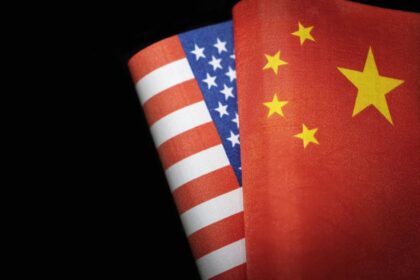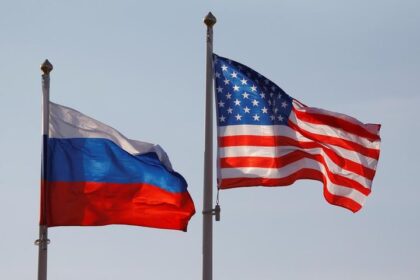Pakistan, throughout its inception, has been a major U.S. ally and a significant beneficiary of U.S. foreign assistance. However, it is now facing the challenge of navigating a future without the significant financial aid it once received from the U.S. This support was first decreased in 2017 when President Trump publicly stated that Pakistan needed to do more. However, the succeeding Biden administration increased USAID towards Pakistan, especially in 2022, as humanitarian aid was needed after the 2022 floods. After regaining power, President Trump again completely suspended USAID, and this time, it’s not only Pakistan being denied this aid, but all countries. The question now is: What will be the implications of this suspension?
According to The Congressional Research Service’s report on Direct Overt U.S. Aid Appropriations for and Military Reimbursements to Pakistan, a total of $34.18 billion was received by Pakistan in USAID from 2002 to 2020 over 15 years. This substantial amount contributed to various sectors, primarily security, healthcare, and education. The aid was provided in three major sectors: security-related aid, economic development and humanitarian aid, and Coalition Support Fund reimbursements (CSF).
USAID Suspension: President Trump’s “America First” Policy
Earlier this month, President Donald Trump delivered an executive order freezing United States Agency for International Development (USAID) projects worldwide for 90 days as part of his “America First” policy. Trump’s supporters praised this initiative with great enthusiasm. In addressing this controversial decision to freeze humanitarian aid benefiting millions globally, President Trump made the following statement:
“The whole thing is a fraud. Very little (of USAID) is being put to good use. Every single lie that I look at in terms of events and transactions is either corrupt or ridiculous.”
The rationale provided for this decision is that America must now address its own issues before focusing on those of others. As the saying goes, charity begins at home. The aid that was previously being provided to other countries will now be used to tackle domestic issues like poverty, healthcare access, housing crises, unemployment, and more. Another argument made is that influential countries like China and Russia do not provide such aid to poor countries, so the U.S. is under no obligation to do so either.

Implications for Pakistan’s Development and Key Sectors
While the debate about whether this decision was needed continues, the implications for Pakistan are concerning. In Pakistan, a total of 39 projects were under USAID funding. As per the latest reports, these 39 major USAID-funded projects across various sectors, including energy, economic development, agriculture, democracy, human rights and governance, education, and humanitarian assistance, have now come to a halt.
The most significant impact is on the healthcare sector. Millions of needy people who relied on this aid for their treatment are now left helpless. Through USAID, millions of people received medical aid, and Pakistan’s healthcare infrastructure was being strengthened. A total of $86 million was allocated to healthcare programs. USAID supported various initiatives aimed at combating infectious diseases like HIV/AIDS, polio, and tuberculosis. A significant contribution from USAID was towards eradicating polio. From 2001 to 2016, the U.S. provided over $300 million for polio eradication, leading to a swift decline in polio cases in Pakistan. Now, due to the suspension of aid, millions will be without necessary medicines and healthcare services that were previously funded by USAID.
Impact on Education, NGOs, and U.S.-Pakistan Relations
Another sector that will likely be hit hard is education. According to the USAID Pakistan Education Report, between 2020 and 2022, over 30,000 merit and need-based scholarships were provided. Due to the suspension of USAID, these scholarships will no longer be available for students who want to pursue higher education abroad. Additionally, the aid was also used to fund the construction of schools in underdeveloped areas, including rural villages where basic education is inaccessible. Now, the burden will fall on the Pakistani government to continue these projects, adding pressure to an already crumbling economy.
USAID was also a major contributor to funding NGOs addressing various issues, such as natural disasters and Afghan refugees in Pakistan. In 2022, USAID’s funding to Pakistan totaled $284 million, of which $120 million was dedicated to humanitarian aid. Pakistan was struck by unprecedented floods in 2022 due to changing weather patterns. With over 100,000 NGOs working in the country, hundreds of them were directly funded by USAID. These NGOs addressed a wide range of issues, including women’s rights, humanitarian relief, economic empowerment, and youth development.

The suspension of aid could also affect the already tense U.S.-Pakistan relations. Both countries have been major allies in the past, supporting each other during significant times, such as America deploying battleships on the Pakistan-India border during the 1971 war or Pakistan providing bases for the CIA’s covert drone operations during the War on Terror. However, in recent times, relations have deteriorated, and the suspension of USAID could exacerbate these tensions.
Final Thoughts: Eroding Trust and Delayed Progress
This aid significantly contributed to growth and development, particularly in rural areas, where issues like lack of education, healthcare, and poverty are already prevalent. This suspension has not only hindered Pakistan’s development but has also risked eroding trust between the U.S. and Pakistan. As the suspension continues, the trajectory of development in Pakistan is facing a severe deceleration. The long-term effects of this decision could be far-reaching, impacting not just Pakistan’s growth, but also the dynamics of U.S.-Pakistan relations.
















